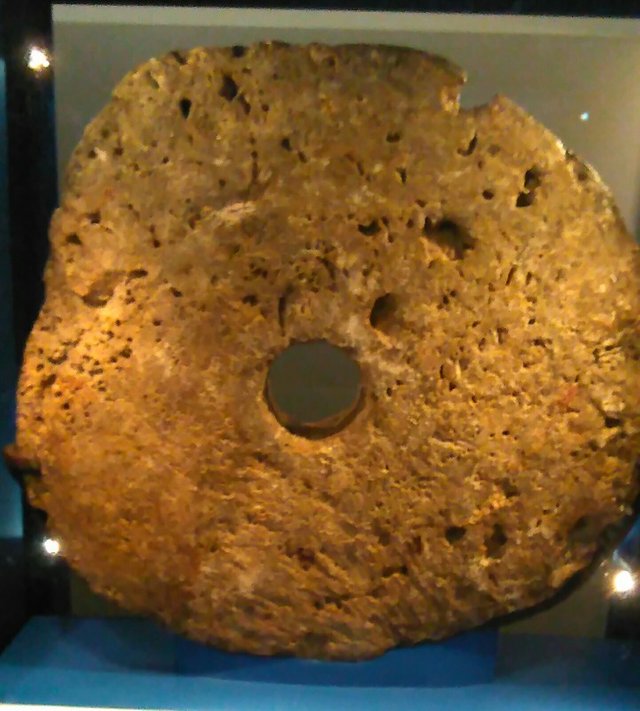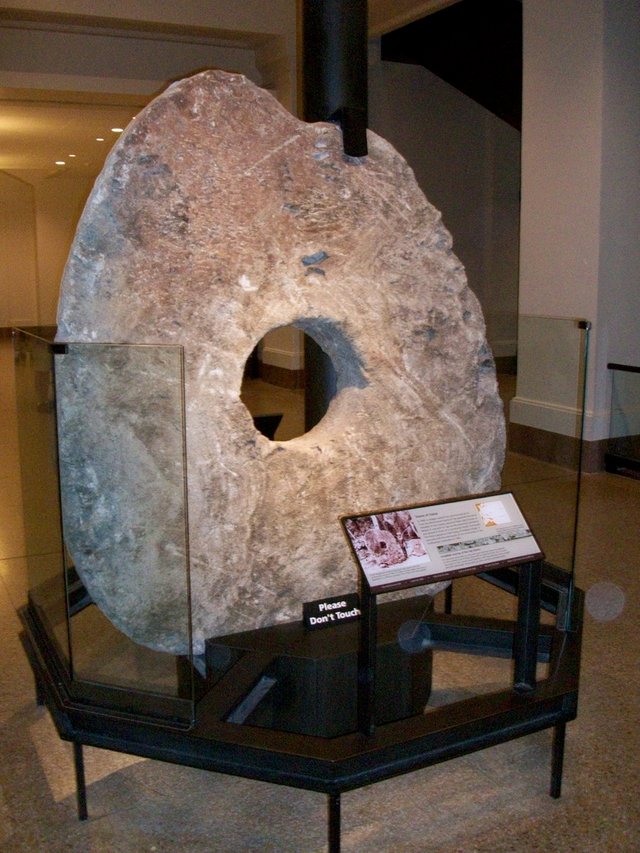
(Rai Stone - picture taken by me)
For trade to function within a society, there must be an agreed-upon unit of measurement to value your labors versus those of others. By exchanging your labor with others, you can acquire food and shelter while focusing on the things that you are good at and enjoy doing for currency.
Each society in history has had their own forms of currency. The basic necessity for a good currency is limited availability. Additionally, you need the currency to scale to population growth and society expectations. It was this reason that the Dutch began to use Tulip Bulbs as a current in Dutch Golden Ages. Based on the growth rates of the bulbs, it was believed that they were the best currency for portability and money supply growth. We know how that ended. (Read https://en.wikipedia.org/wiki/Tulip_mania)

Around 1000 to 1500 AD, the island of Yap in the Pacific Ocean struck upon a most unusual form of currency. There was no limestone on the island, but there were nearby islands, such as Palau, that did have limestone. As travel by canoe took days and was hazardous, their society pegged their labors to the value of limestone coins, called Rai Coins (or commonly Yap Coins). Eventually, residents of the limestone queries formed their own society and would supply Yap with Rai Coins in exchange for food, grains, and meats that were not available on Palau.
Rai Coins came in small portable sizes of 7 centimeters, up to as large as 3 meters. As the largest stones weighed tons, they were usually placed in front of meeting places or along pathways to keep then secure. The current owners of the coins were etched onto the back of the coin. As ownership changed, a new name would be added. (The ultimate centralized blockchain!)

But, how were they an example of virtual currency?
There is an interesting tale from the history of Yap. As one rather large coin was being transported by multiple canoes, the stone fell into the ocean just offshore of Yap and could not be recovered. All knew the coin was there and agreed that it belonged to the owner, so he was credited as such. Over the years, the stone changed ownership without any physical contact with it. In this story, it was evidence that ownership of a Rai Coin that was transferred, without anyone physically possessing it.
The coin probably still existing on the Pacific Ocean floor today, but now only holds value to historians. If you are curious of their value today, I found one about a meter large recently went for around $12500 on a coin auction site. I would love to own one some day.
Thanks for reading.
The stone is similar to a doughnut or a cookie, it's time to go eat!))))) Good post , thank you
Downvoting a post can decrease pending rewards and make it less visible. Common reasons:
Submit
Thanks! If you right-click on my image and google-search, it comes back with "soda bread".
Downvoting a post can decrease pending rewards and make it less visible. Common reasons:
Submit
ha ha ha OK ;))
Downvoting a post can decrease pending rewards and make it less visible. Common reasons:
Submit
Neat history here, thanks for enlightening me. :D
Downvoting a post can decrease pending rewards and make it less visible. Common reasons:
Submit